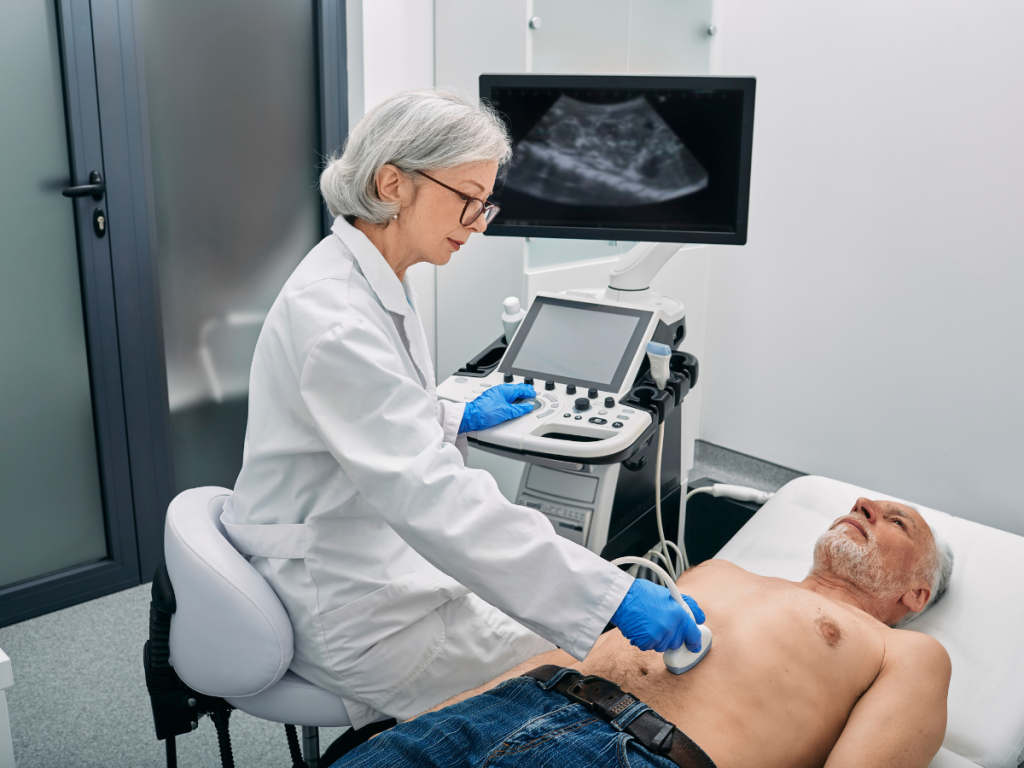An abdominal scan, also known as an abdominal ultrasound, is a non-invasive medical imaging test that uses high-frequency sound waves to produce images of the organs and tissues in the abdomen. In this blog, we will discuss the organs that an abdominal scan can show and how it can help diagnose various conditions.
What organs does an abdominal scan show?
An abdominal scan can show various organs in the abdomen, including:
Liver: An abdominal scan can show the size, shape, and texture of the liver. It can help detect liver diseases, such as cirrhosis, hepatitis, or liver tumors.
Gallbladder: An abdominal scan can show the size, shape, and position of the gallbladder. It can help detect gallbladder diseases, such as gallstones or inflammation.
Pancreas: An abdominal scan can show the size, shape, and texture of the pancreas. It can help detect pancreatic diseases, such as pancreatitis or pancreatic cancer.
Spleen: An abdominal scan can show the size and position of the spleen. It can help detect splenic diseases, such as an enlarged spleen or a ruptured spleen.
Kidneys: An abdominal scan can show the size, shape, and texture of the kidneys. It can help detect kidney diseases, such as kidney stones, cysts, or tumors.
Bladder: An abdominal scan can show the size and position of the bladder. It can help detect bladder diseases, such as bladder stones or tumors.
Stomach and intestines: An abdominal scan can show the structure and contents of the stomach and intestines. It can help detect digestive disorders, such as ulcers, inflammation, or blockages.

How can an abdominal scan help diagnose conditions?
An abdominal scan can help diagnose various conditions by:
Detecting abnormalities: An abdominal scan can detect abnormalities in the organs and tissues of the abdomen that may be affecting their function.
Guiding biopsies: An abdominal scan can guide biopsies of the liver, pancreas, or kidneys, which can help diagnose liver cancer, pancreatic cancer, or kidney cancer.
Evaluating blood flow: An abdominal scan can evaluate the blood flow to the organs in the abdomen, which can help detect blockages or narrowing of the blood vessels.
Conclusion
An abdominal scan is a safe and non-invasive medical imaging technique that can show various organs in the abdomen. It can help detect abnormalities in the liver, gallbladder, pancreas, spleen, kidneys, bladder, stomach, and intestines, which can lead to a timely diagnosis and treatment. If you have any concerns about your abdominal health, talk to your doctor about whether an abdominal scan may be appropriate for you.

FAQs
Is an abdominal scan painful?
No, an abdominal scan is a painless procedure that does not involve any radiation exposure.
How long does an abdominal scan take?
The time it takes for an abdominal scan can vary depending on the healthcare provider and the specific circumstances. Generally, an abdominal scan takes between 30 and 60 minutes to complete.
Is there any preparation needed before an abdominal scan?
Your doctor will provide instructions on how to prepare for your abdominal scan. This may include fasting for a certain period of time before the procedure or drinking water to fill the bladder.
Can an abdominal scan detect all conditions?
No, an abdominal scan is a useful tool for diagnosing many conditions in the abdomen, but it may not be able to detect all conditions.
Are there any risks associated with an abdominal scan?
No, there are no known risks associated with an abdominal scan. It is a safe and non-invasive medical imaging technique.
